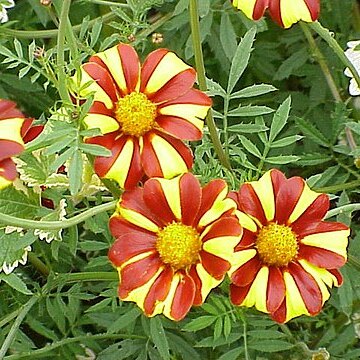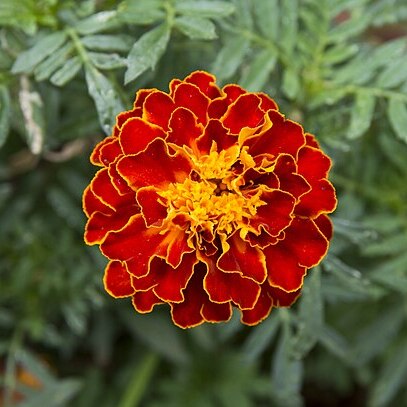Heads mostly radiate, the rays few (except in double forms), pistillate and fertile, mostly yellow to red-orange; invol bracts uniseriate, 3–10, united to near the apex and each with a row of evident embedded oil-glands on each side; receptacle flat, generally small, naked; disk-fls tubular and perfect; style-branches ± elongate, flattened, with introrsely marginal stigmatic lines and a short, often expanded, hirsutulous appendage; achenes slender and elongate; pappus of several very unequal, often ± connate scales, generally 1 or 2 elongate and acute or awn-tipped; glabrous, aromatic herbs with conspicuously gland-dotted, usually pinnatifid lvs, at least the lower opposite. 30, warm New World.
Annual or perennial herbs, strongly aromatic when crushed. Leaves opposite or alternate, usually pinnate, sometimes simple, gland-dotted. Capitula solitary or in dense corymbs, terminal, heterogamous; phyllaries in a single row (rarely in 2 rows), the margins connate, glandular; receptacle epaleate. Ray florets few, in a single series, female; style branches filiform; disc florets few to many, bisexual; anthers with an acute appendix at apex, style branches subacute and pilose. Achenes black, narrowly cylindrical; pappus of 1–3 setae and 7–9 much shorter scales with ciliate margins.
Aromatic annual or perennial herbs. Lvs opposite, at least below, often alternate above, pinnatifid or pinnate, and usually serrate. Capitula solitary, or in loose to dense corymbs. Involucral bracts in 1 row, connate almost to apex. Receptacle flat; scales 0. Outer florets ♀, ligulate; ligules cream, yellow, orange or red-brown. Inner florets ☿, tubular (transformed into ligulate florets in some cvs). Achenes long-linear, angled; pappus of 5-10, unequal, often connate, awned scales.


